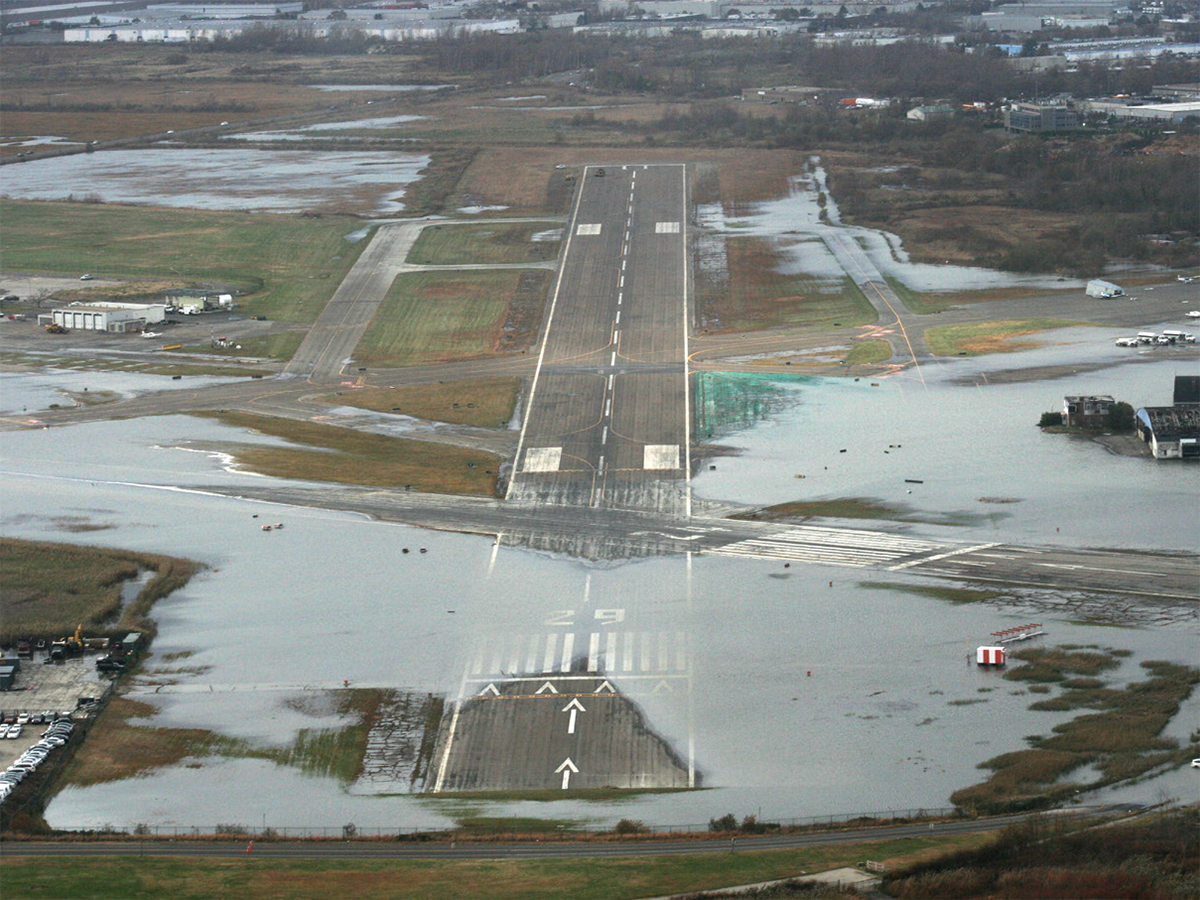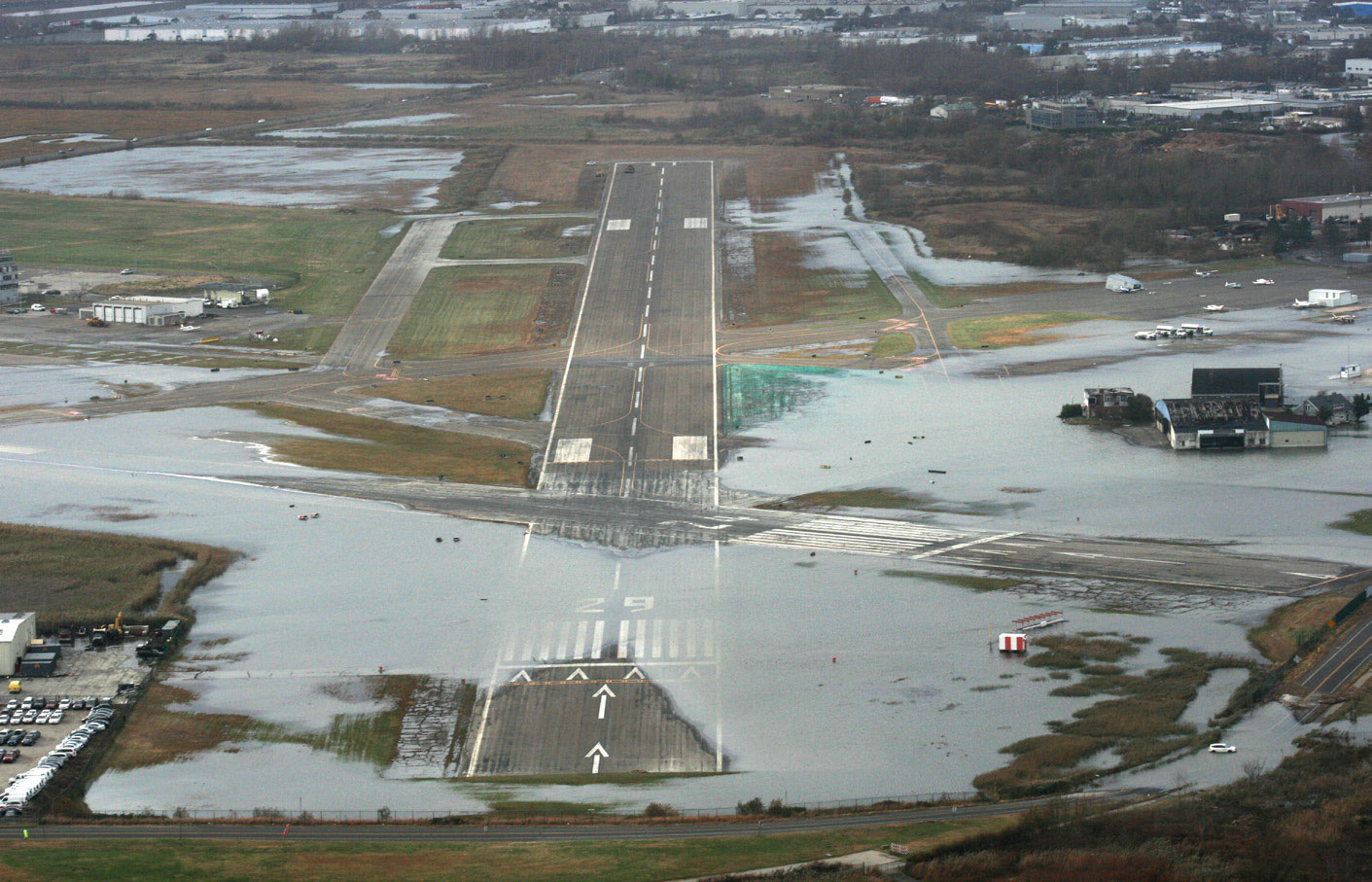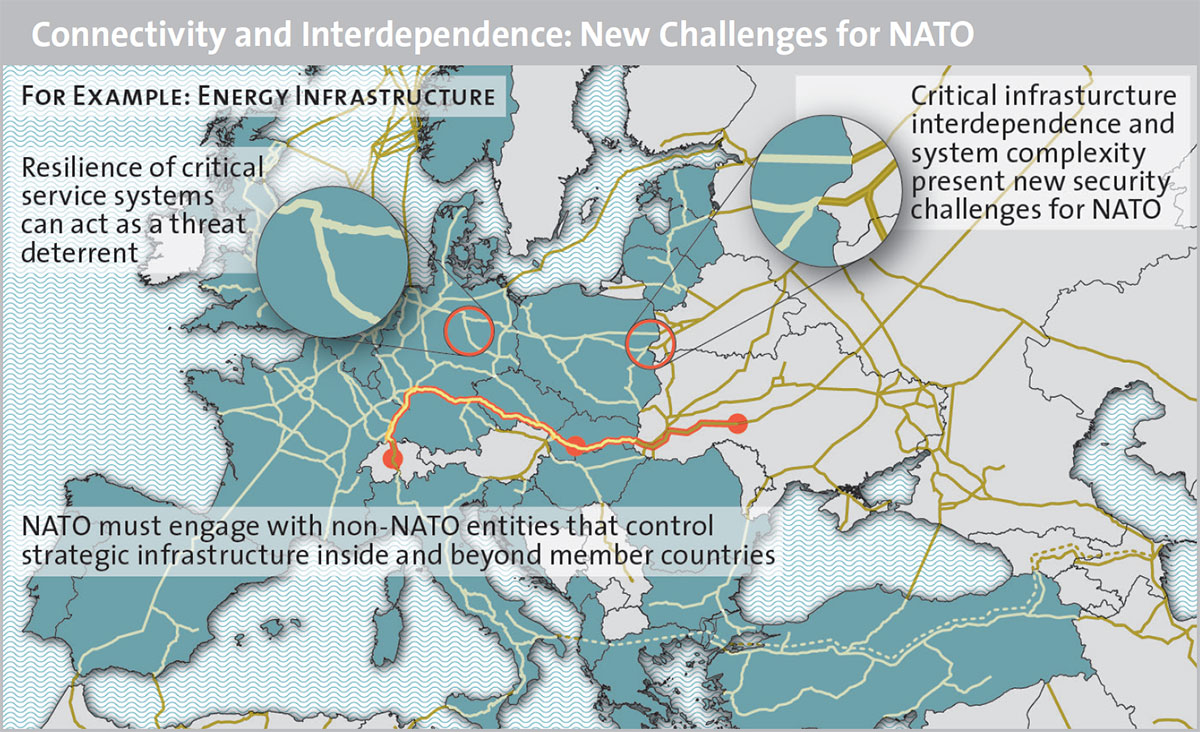By Tim Prior
 Tim Prior argues that addressing the security vulnerabilities created by global connectivity and interdependence is at the heart of the Alliance’s current push to increase its resilience. However, this push presents a challenge to NATO, contends Prior, as it will require a cultural change within the Alliance that recognizes 1) the need for strong cooperation with civilian organizations and the private sector; and 2) support for the building of resilience beyond NATO’s territorial borders.
Tim Prior argues that addressing the security vulnerabilities created by global connectivity and interdependence is at the heart of the Alliance’s current push to increase its resilience. However, this push presents a challenge to NATO, contends Prior, as it will require a cultural change within the Alliance that recognizes 1) the need for strong cooperation with civilian organizations and the private sector; and 2) support for the building of resilience beyond NATO’s territorial borders.
Global connectivity presents new security challenges for NATO, especially in relation to critical infrastructure interdependence. Building resilience though civil preparedness will be a paradigm changer for deterrence. However, resilience requires adaptation and cultural change in the alliance. Non-state actors need to be engaged to maintain and enhance the security of allies.
Since the 2000s, resilience has become a ubiquitous guiding principle underpinning Western security strategies. The concept’s rise reflects an acknowledgement of the value of anticipation and the importance of sub-national or local adaptive responses to unexpected extreme events (like the terrorist attacks in the US on 11 September 2001). NATO is a relative latecomer to resilience thinking in the context of security, having only committed itself to building resilience at the North Atlantic Council meeting in Warsaw in 2016:
“We are today making a commitment to continue to enhance our resilience against the full spectrum of threats, including hybrid threats, from any direction. Resilience is an essential basis for credible deterrence and defence and effective fulfilment of the Alliance’s core tasks.”
This commitment was made as an acknowledgement of the changing nature of security challenges facing alliance members, which include also non-traditional (military and non-military) threats like those posed by so-called “hybrid warfare” and cyber attack. Within this shifting security context, NATO’s focus on building resilience (and being resilient) strongly reflects the need to protect critical infrastructures by reducing their vulnerability. NATO recognizes that stable critical civilian services are not only important for society, but also the foundation on which NATO’s military capacity and actions are based.

In 2012, Hurricane Sandy caused severe damage to critical infrastructure on the US east coast. NATO has recently put a focus on building resilience. Connecticut National Guard
Enhancing the resilience of NATO members reflects a refocusing of the alliance’s 2010 Strategic Concept. At the time of its writing, this document affirmed three essential core tasks: the need to uphold the notion of collective defense outlined in Article 5 of the treaty, the application of NATO’s political and military capabilities in crisis management, and lastly, the promotion of cooperative security beyond NATO’s territory through diverse cooperation. These tasks were seen to embody the means by which the security of NATO’s territory and populations could be assured within a threat landscape that was perceived to be changing and increasing in complexity. This perception was especially realized in 2014/15 in the context of Russia’s annexation of the Crimea, which was an important trigger for rethinking the way alliance security is maintained and enhanced.
Contemporary threats are linked to the increasing connectivity and interdependence of key services that support society. At a June 2017 Resilience Capacity Building meeting in Prague, one NATO representative noted that the complexity of new security challenges complicates protection by obscuring physical barriers so that threats can appear from anywhere in time and space. Therefore, addressing vulnerability generated by “hyper-connectivity” and interdependence, especially with respect to modern critical infrastructures (e.g., energy, communications, transport, etc.), is at the heart of NATO’s push to increase its resilience and that of its members. The growing importance of strengthening alliance resilience is evident in the 2016 Warsaw Summit Communiqué, where the need to be resilient is raised in connection with issues as diverse as collective defense, pushing allies to take more responsibility for cyber-defense capabilities, in regional assistance activities for Eastern Europe, etc.
This resilience push highlights a critical issue for the alliance: The potential of both military and new non-military threats warrants a shift in emphasis requiring security solutions that mix military and non-military (e.g., critical infrastructure protection) elements. It recognizes the need for distributed responses across the large number of actors responsible for managing and protecting critical infrastructures: a space where threats are not dealt with by solely relying on a military monopoly.
Meeting new challenges requires a fundamental adaptation, i.e., a change in NATO culture that recognizes new roles for non-state actors in building security through resilience. Non-state actors must be seen as key players in maintaining a strong alliance. Here, cooperation extends beyond the alliance to include, for example, cities (nodes where societal complexity and interdependence are concentrated), civilians (whose resistance and recovery to and from disturbance is a focus of security), and the private sector (whose role in managing and maintaining critical infrastructures is significant and growing).
Resilience in the 1949 Treaty
Broadly speaking, resilience describes the ability of a system to respond positively to disturbance. It encompasses the notion that a system has a set of “adaptive capacities” that allow it to respond to a disturbance. Characteristics that help an entity to adapt to a disturbance are said to determine its adaptive capacity, including for example flexibility, resource availability, networks and the distribution of activities, self-organization, etc. Resilience is often sought in uncertain and complex situations, when activities inherent in resilience, like anticipating potential disturbances and establishing the conditions that would support adaptation, can help to mitigate the negative consequences of uncertain, interdependent, and complex threats. Importantly, the notion of building resilience implies that the diverse characteristics that ensure adaptive capacities in an entity can be altered.

Although resilience is widely sold as the new fashionable security solution, fundamental elements of resilience can already be discerned in the 1949 North Atlantic Treaty. The need to resist threat (for example through “self-help and mutual aid”), promote stability, and unite (for example, in “collective self-defence”) reflect basic principles of resilience, and these elements are linchpins that hold the North Atlantic Treaty together, especially in the context of Articles 3 and 5. Both articles are event-focused. Article 3 is predicated on the peacetime state of readiness or preparedness of the alliance, and specifically of the individual alliance members, to resist a potential threat. Article 5 focuses on the post-event response of the alliance, and particularly on the collective responsibility of the alliance members to respond to an actual threat in a unified manner.
Resilience and Civil Preparedness
Article 3 is most clearly associated with NATO’s current resilience deliberations. In the context of the Article, NATO considers resilience to be the result not only of the military capacity of the organization, but also of the civil preparedness of the allies. The basis for this assumption is the belief that well-prepared allies “are less likely to be attacked, making NATO as a whole stronger”. Within this composite resilience conception, NATO places the greatest emphasis on allies’ civil preparedness. Civil preparedness seeks to ensure infrastructures and services (transport, energy, communication, etc.) that are critical for supporting military capacity (when required), are stable, and operate continuously during peacetime and in crisis.
NATO’s recent focus on resilience as a precautionary means of addressing vulnerabilities within and beyond NATO territory follows a historical trajectory. During the Cold War, NATO strongly supported national civil defense policies of allied nations, recognizing that these national activities supported the ability of allies to help themselves and offer mutual aid when required. However, with the fundamental security changes after the Cold War, the focus on and funding for civil security activities by NATO waned as alliance vulnerability was seen to shift from within the alliance to the boundary of NATO’s territory. Since the Cold War, the alliance has undertaken two clear activities intended to build stability outside of the alliance’s territory that enhance its security: first, it has brought supposedly vulnerable, newly independent, peripheral states into the NATO fold; second, it began to engage in “out-of-area” operations. The latter shift, in particular, set a precedent for military and non-military activities designed to ensure the security of allies by explicitly mitigating the adverse consequences of instability outside NATO territory. This trajectory highlights the potential of NATO to transform itself in response to new challenges. It also provides the basis on which further transformation can take place in response to the modern dynamic threat landscape.
Thinking Beyond Article 5
In this modern threat landscape, characterized by interdependence and connectivity, Article 5 is affected by civil preparedness and the need to seek alliance security even outside of NATO territory. Without effective civil preparedness, allied nations would face difficulties supporting a NATO military operation in collective self-defense, which is now heavily dependent on stable, continuously available, and robust national critical infrastructures. Given the nature of the critical infrastructure systems, which also connect alliance members to the near neighborhood and beyond, what happens outside of the alliance can also influence security within the alliance.
As these issues highlight, modern alliance security requires NATO to think beyond Article 5. While the focus, and desired outcome, of efficient collective self-defense remains the security of alliance members, the means of reaching that outcome, making collective self-defense possible, hinges on NATO’s ability to engage a far broader range of actors (including non-state actors) than has hitherto been necessary. Understanding and engaging civilian systems, including beyond alliance territory, in support of military capacity is a fundamental requirement that will support members’ collective self-defense in a hyper-connected and interdependent world.
A Changing Threat Landscape
Although many of the North Atlantic Treaty’s (roughly 70-year-old) central tenets closely reflect ideas that are also connected to the modern concept of resilience, NATO’s active focus on building resilience has come reasonably late, compared to other organizations like the EU. Where a generic security management approach (from a risk management perspective, for instance) assumes that known risks or threats are manageable through preventative actions, mainly organized and executed through strong centralized structures, adopting a resilience approach acknowledges the existence and persistence of existing risks (anticipating) and the necessity of understanding systemic vulnerability in order to prepare for potential future shocks and disturbances (adapting).
New security challenges, such as the prospect of cyber attacks against communication systems, are fundamentally linked to growing complexity in political, technical, and social systems, and can threaten these very same systems. Under these conditions, the anticipatory capability that resilience embodies, or presents, becomes very attractive. Here, traditional military activities (including situational awareness) are seen to be supported through stronger integration of civilian and military capabilities, through whole-of-government activities, engaging with the private sector, and through constructive associations with international bodies like the EU and partner countries. In fact, already in 2014 the EU’s European Energy Security Strategy highlighted the need to examine the role of non-EU entities in the control of strategic infrastructure. NATO’s recognition of the renewed role that civil preparedness plays in a resilient alliance has encouraged the establishment of guidelines (see box p. 3) designed to support the enhancement of national governments’ resilience through consistent civil preparedness actions.
NATO’s Resilience Guidelines
1. Assured continuity of government and critical government services: for instance, the ability to make decisions, communicate them, and enforce them in a crisis;
2. Resilient energy supplies: back-up plans and power grids, internally and across borders;
3. Ability to deal effectively with uncontrolled movement of people, and to de-conflict these movements from NATO’s military deployments;
4. Resilient food and water resources: ensuring these supplies are safe from disruption or sabotage;
5. Ability to deal with mass casualties: ensuring that civilian health systems can cope and that sufficient medical supplies are stocked and secure;
6. Resilient civil communications systems: ensuring that telecoms and cyber-networks function even under crisis conditions, with sufficient back-up capacity; and
7. Resilient transport systems: ensuring that NATO forces can move across alliance territory rapidly and that civilian services can rely on transportation networks, even in a crisis.
Whole-of-Society Deterrence
“The Secretary General stressed that NATO’s defence and deterrence posture is full-spectrum, from resilience and national defence, to conventional capabilities, to the nuclear dimension.” J. Stoltenberg, NATO Secretary General
For NATO, the strategic importance of civil aspects of security, like critical infrastructure protection, has waxed and waned. However, under the current security conditions, civil preparedness, and its contribution to the resilience of the alliance and its members, is seen not just as a means of strengthening the alliance to deter threats, but also as a means of engaging with alliance-external actors to pre-empt and mitigate vulnerability that arises through global interdependence. At the Warsaw Summit of 2016, NATO members committed themselves to reinforcing collective defense, enhancing capabilities, and strengthening resilience, including by “project[ing] stability beyond [NATO’s] borders”.
For example, how does NATO secure energy infrastructures positioned outside member countries that would be critical in supporting the members’ collective self-defense in the event of an attack or other threat? This would require members to cooperate with those organizations, companies, and governments that have direct responsibility for this infrastructure. If NATO member countries cannot address these potential issues, then the ability of the alliance to achieve collective self-defense is compromised.
Encouraging a “whole-of-society” approach to security, by sharing a high level of resilience within and beyond NATO territory, is considered to be the future of deterrence and defense. Engaging multiple actors inside NATO territory for resilience-building is consistent with the history, goals, and objectives of the alliance. But the need to engage actors beyond NATO territory (and not just through extensions of membership), especially non-state actors like the private sector, cities, and the public, presents a different approach to existing NATO practice in ensuring alliance security. These new forms of cooperation are consistent with an uncertain connected, and highly interdependent threat environment.
Transforming for Resilience
In general, discussions about building resilience are often complicated by confusion over two issues: the way resilience is expressed, and the relationship between resilience and vulnerability. These issues are important in the context of analyzing the state of NATO’s resilience. On the one hand, NATO’s focus on the stability and continuity of in-country systems and structures necessary for successful military deployments reflects a very static notion of resilience, based on the (traditionally very technical) idea that systems should either resist or “bounce back” from a disturbance. In reality, complex social systems, like organizations or communities, have the capacity to learn and change, improving their likelihood of responding more effectively to future disturbances.
This leads to the second issue, that NATO is focused on reducing vulnerability, where being resilient demonstrates invulnerability. However, resilience is not the antonym of vulnerability, but a characteristic of a system that can influence factors that mitigate vulnerability. In uncertain and complex threat environments, a resilient system can nevertheless be vulnerable, especially if threats (and the specific vulnerabilities those threats target) are difficult to anticipate and mitigate. This is because vulnerability is not only determined by the susceptibility to harm, but also by the exposure of an entity to potential threats or disturbances – no matter how resilient a structure or community becomes, it may nevertheless remain exposed. In a complex and interdependent operating environment, it is almost impossible to predict or forecast all future threat and disturbance scenarios, so a transformative view of resilience that drives and bolsters allies’ abilities to learn and adapt presents the most effective means of addressing vulnerability in the long term.
The high interdependence of modern critical service systems is matched by, and arguably promotes, a threat landscape that is equally complex. Under such circumstances, resilience is sometimes viewed almost as a panacea to anticipating uncertainty, reducing vulnerability and adapting to events – but it must be considered as a transformative process. Although NATO’s resilience focus on civil preparedness (Article 3) concentrates strongly on non-transformative stability and critical (infrastructure) service continuity, recognizing the role of diverse actors within and beyond the alliance suggests interest in taking a more transformative approach to resilience for cooperative security (and is in line with the third core task of the 2010 Strategic Concept). The latter recognizes that modern military capacity relies on civilian systems, and that vulnerability is no longer only geographic. On the one hand, such a realization highlights the need for strong cooperation with civilian organizations and the private sector. On the other hand, it demonstrates that supporting resilience-building beyond NATO’s territorial borders, projecting resilience outward, can be just as important
No comments:
Post a Comment